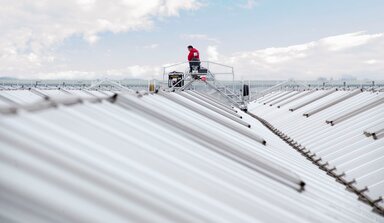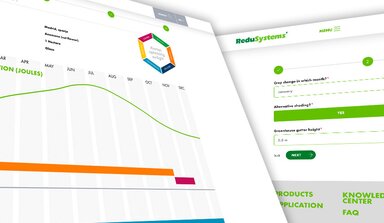Free sunlight is more welcome than ever
The rapidly rising natural gas prices are putting many companies in a bind. Every little bit of improvement therefore helps. For example, by making optimal use of free solar energy.
The sun’s radiation represents a significant chunk of energy. About half of this energy is present in the PAR region. This is the radiation the plant uses for photosynthesis. The other half consists of heat radiation that heats up the crop and the greenhouse.
In hot summers it is preferable to reduce this heat radiation somewhat. But in dark months this part of the sun’s radiation supplies extra energy. Energy that doesn’t cost anything.
To maximise this energy, the glass must allow as much light through as possible. This means that first and foremost the glass must be clean. The greenhouse roof becomes dirty over time due to deposits, algae, dust, sand and the like. This is a gradual process. By the time it becomes noticeable, a lot of valuable energy has already been lost.
Cleaning is light gain
We often forget that the inside of the glass also becomes dirty. Because the surface is often wet, there is lots of opportunity for algae to grow. Furthermore, the volatile additives in crop protection agents precipitate on the glass. This, too, is a gradual process.
All the more reason to regularly clean the glass. Definitely on the outside, and, if the crop growing cycle permits, on the inside as well. Due care in this area results in a 5 to 10% light gain. The GS-4 cleaning agent effectively removes dirt and at the same time is user-friendly for the glass.


Utilising condensation
The glass is covered with condensation for a large part of the year. Research conducted by Wageningen University & Research shows that the nature of the condensation droplets determines whether this is at the expense of light levels. Coarse condensation droplets reduce light levels by as much as 9%. By contrast, a finely distributed water film enhances light transmittance.
The AntiCondens coating ensures that the condensation droplets are finely distributed. Measurements in actual practice show that this results in a 5-7% light gain. In case of plastic greenhouses this can be as high as 15%. This means that the greenhouse warms up faster in the morning and this directly reduces heating costs.
Better heat emission
The above sections describe ways of getting more solar energy into the greenhouse. But the heat produced by the hot water boiler can also be better utilised. An often overlooked problem is that the heating pipes will start to rust. This makes heat emission inefficient.
Painting the pipes with PipePaint can increase heat radiation by as much as 10%. As a result, pumps in the heating system do not need to run as fast, which saves electricity. Moreover, PipePaint ensures that the sunlight is optimally reflected so that it all ends up in the crop. In addition, PipePaint can be applied while the crop is growing because it does not emit any vapours that are harmful to the crop.


